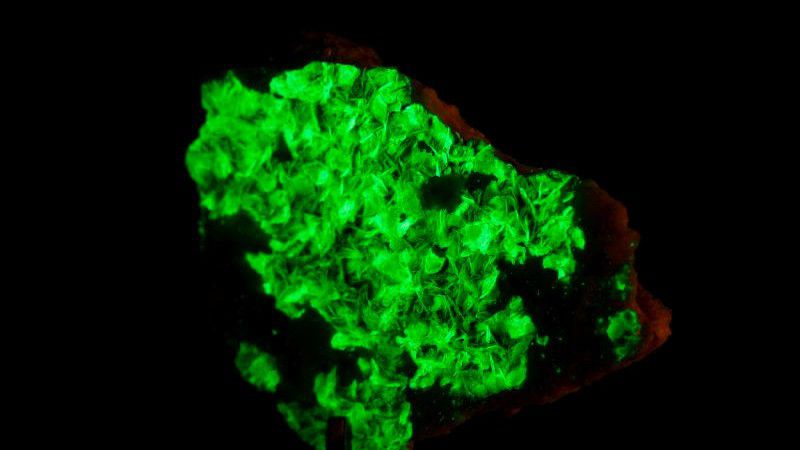What is astatine? What are the properties, symbol and uses of astatine element? Information on astatine element. What is astatine used for?

ASTATINE; a radioactive element, is the heaviest member of the halogen series of elements, which includes fluorine, chlorine, bromine, and iodine. The atomic number of astatine is 85, and the atomic weight of the longest-lived isotope is 210. Its symbol is At. The name “astatine” was taken from the Greek word astatos, meaning “unstable.” All isotopes of astatine are highly radioactive; that is, astatine has no stable isotopes. No astatine has been isolated from natural sources. It is a synthetically produced element.
Astatine was first produced by Dale R. Corson, Kenneth R. MacKenzie, and Emilio Segre in 1940. They identified the isotope At-211 in targets of bismuth that were bombarded with energetic helium ions in the 60-inch cyclotron at the University of California, Berkeley. The nuclear reaction can be represented as:
BP” + He4 — At211 + 2 neutrons. This isotope has a half-life of 7.5 hours. In 60 percent of its disintegrations, it transmutes itself by the nuclear capture of an orbital electron. In these cases, it transforms to Po-211, which decays to Pb-207. In 40 percent of its disintegrations, it decays by the nuclear emission of an alpha particle. In these cases, it transforms to Bi-207.
Other isotopes of astatine have been synthesized by nuclear transmutation reactions, and some information is available on more than 20 isotopes. Of these isotopes, At-210 has the longest half-life, 8.3 hours. It is unlikely that any isotope of astatine with a longer half-life will ever be discovered.
Chemical studies of astatine must be made by tracer methods because it is highly radioactive and is obtained only in small quantities. Most studies have been designed to develop procedures for isolating radiochemically pure solutions from the complex mixtures of radioactive contaminants produced in nuclear reactions. Other experiments have been designed in order to explore the tracer properties of an element in Group Vila of the periodic table.
Astatine exhibits several oxidation states that more or less closely resemble the known states of iodine. However, experiments with astatine are performed in extremely dilute solutions. The interpretation of the experiments is complicated by the fact that iodine in extremely dilute solutions shows behavior markedly different from that normally observed.
Astatine has oxidation states with coprecipita-tion characteristics that are similar to those of iodide ion, iodate ion, and free iodine. Under oxidizing conditions, several positive oxidation states, including an astatate ion, can be formed. In the free state, astatine is quite volatile. It is readily taken up by organic liquids such as ethyl ether aliphatic ketones or tributyl phosphate. It resembles polonium in the ease with which it plates metals such as copper and silver. It can be removed from an aqueous solution by using a freshly formed precipitate of tellurium metal.
Astatine has some physiological importance because it is readily taken up by the thyroid gland, as is iodine. Absorption of At-211 has possible clinical usefulness because the heavily ionizing alpha radiations can cause localized destruction of thyroid tissue.
What is astatine used for?
Astatine (At) is a highly radioactive element and one of the rarest naturally occurring elements on Earth, with a half-life of only a few hours. Due to its rarity and highly radioactive nature, astatine has limited practical applications.
One potential use of astatine is in targeted alpha-particle therapy for cancer. Alpha particles emitted by astatine can be used to destroy cancer cells, and research is ongoing to develop ways to use astatine in cancer treatment. Astatine has also been used in studies of chemical reactions and as a tracer in biomedical research.
However, due to its scarcity and highly radioactive nature, astatine is not produced or used on a large scale. Instead, it is primarily studied for scientific and research purposes.
What happens if you touch astatine?
It is extremely unlikely that anyone could touch astatine, as it is one of the rarest naturally occurring elements on Earth and is highly radioactive. Astatine has no stable isotopes, and its most stable isotope, astatine-210, has a half-life of only about 8.1 hours. This means that any sample of astatine would decay rapidly, making it very difficult to handle or even to study.
If someone were to touch astatine, the main concern would be the risk of radiation exposure. Astatine emits alpha particles, which can be stopped by a sheet of paper or a few centimeters of air, but can be very harmful if they enter the body. Alpha particles can damage cells and cause cancer, so it is important to handle any radioactive material with extreme care, using appropriate protective equipment and following strict safety protocols.
In short, it is not safe or practical to touch astatine, and it should only be handled by trained professionals with appropriate equipment and facilities.